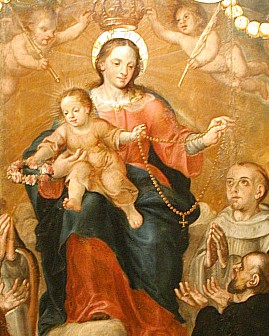Were rose beads first made as prayers counters by early Christians?
I have heard some people say making rose beads dates back to the very beginning of rosary making in the early church. But after some deep looking, I have found that, although this is a romantic idea, it does not seem to be the case. Early rosaries were made of amber, coral, pearls, jet, wood, dried berries, and filigree beads. Rosebeads do have a history, but first…
Let’s start with the history of using beads to count
All religions have found the need for a counting device for prayers. There are stone sculptures as early as 185 BC that show Hindu Sages with rosaries in their hands. Some scholars say that Hindus used prayer beads 9 centuries before Jesus’ birth. Buddhists also predate Christians in using beads for counting prayers. Apparently, the Desert Father and Mothers, Christian monks and nuns who lived in communities in the desert in the 3rd century, mostly used bags of stones to count their prayers, but there are also records of using a board with small holes in it, much like a cribbage board. Prayer beads and prayer strings with knots in them were commonly found in monastic communities in the 500-600s.
So when did people start making beads from roses?
There is no documentation that mentions rosaries made from roses before the 1920s. So this counts as a more or less “modern craft.”

